#sieradzky
Explore tagged Tumblr posts
Text
Siemanko!

Święta, święta i po świętach 😃
U mnie minęły stosunkowo spokojnie. Siedziałam ze zwierzakami, obejrzałam wszystkie odcinki Attack on Titan (ostatnie odcinki ryją psychikę) i generalnie pełen chill out.

Rano w wigilię pojechałam z tatą po Karpia dla mamy na stawy hodowlane pod Sieradz. Ponoć rybka była smaczna „jak żyje 50 lat lepszej nie jadłam” skwitowała moja rodzicielka. Ja ryby nie ruszyłam, nie lubię Karpia i mam odruch wymiotny jak muszę memlać w ustach ości 💀
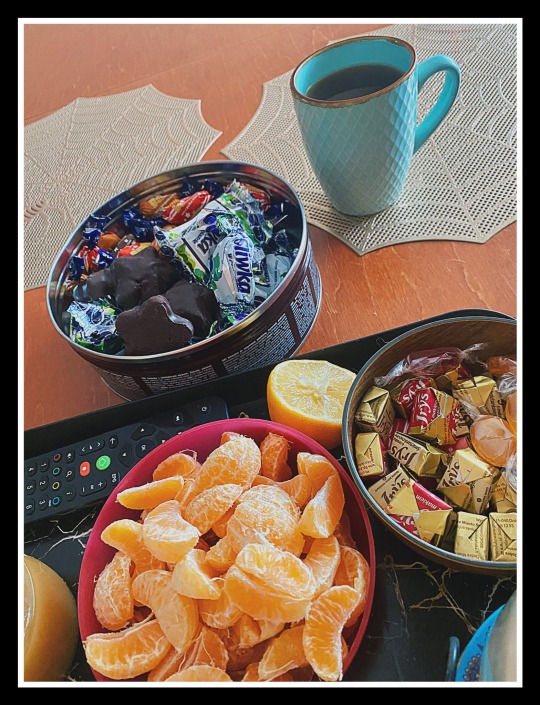
Zadowoliłam się owocami, ciastem i sałatką jarzynową (z odchudzonym majonezem). Pogoda w wigilię była pół na pół. Rano podczas podróży po Karpia śnieg, wieczorem, gdy pojechaliśmy odwiedzić sieradzkie las vegas padało.


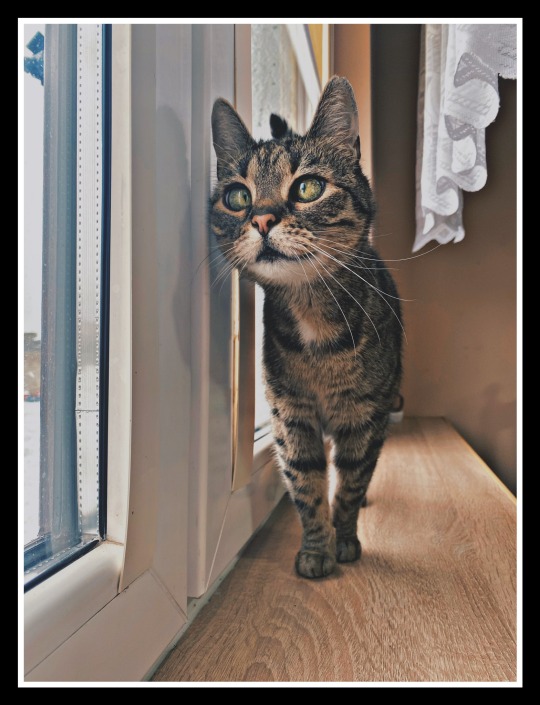

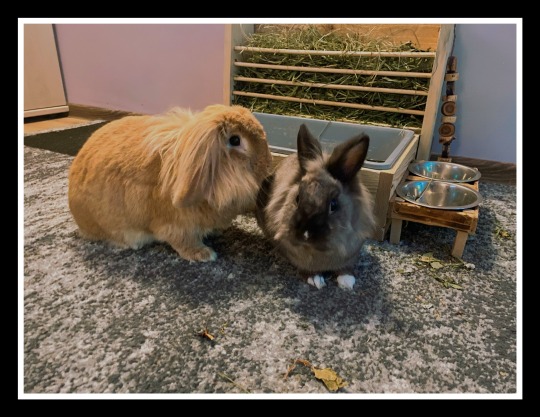
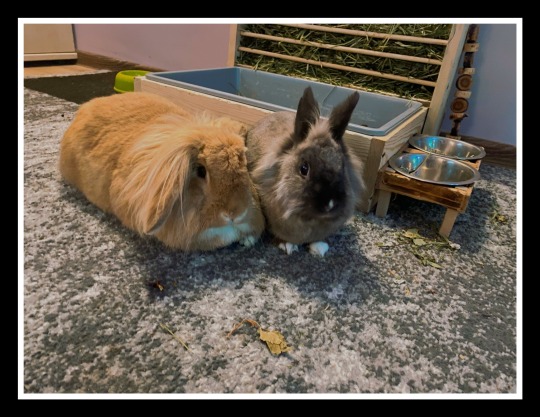
Zwierzaki w nocy przemówiły ludzkim głosem. Niestety nie mam podjęcia co chciały powiedzieć bo Jerry tak zaczął klnąc i się drzeć, że wszystkich zagłuszył. W ogóle ktokolwiek w domu zobaczy Jerrego zaczyna na przywitanie śpiewać „Jerry, jesteś od cholery” (pod piosenkę Jenny Edyty Bartosiewicz) bo on serio jest od cholery. Podejrzewam, że jakbyście w tym momencie namalowali pentagram na podłodze pojawiłby się Jerry. Tu macie film jak się zachowuje ten dziad
youtube
Stał się mega terytorialny a fakt, że zajmuje JEGO spokój i mam czelność go złapać i przytulić sprawia, że jak tylko może to furczy i próbuje gryźć. Tu na zdjęciu złapał Gryzia za ogon XD
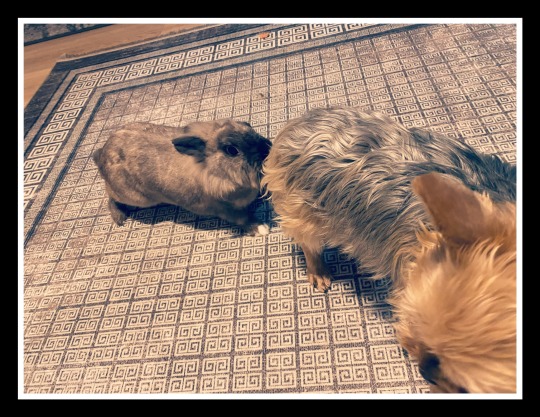
Wczoraj pojechaliśmy z Koperekiem na zabieg kastracji do Warty. Po 15 odebraliśmy po mocnej imprezie ogoniastego. Wieczorem jeszcze mu lekko nogi odmawiały posłuszeństwa, ale koniec końców dziś rano już zaczął molestować choinkę.
25 notes
·
View notes
Text
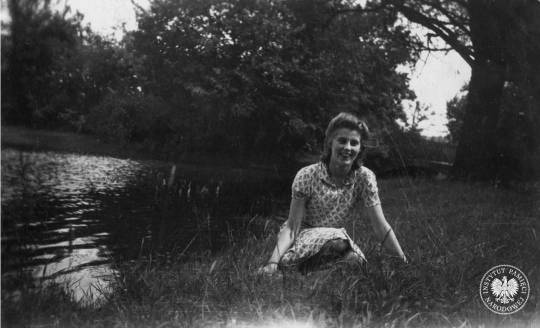
Warm summer day, beautiful river scenery, gorgeous girl.
Another warm summer day, but in a burning city scenery, a dead girl.
➡The scene in this photo may reflect a carefree teenage girl's life. Even if it was like that, it was only for a very short period. The image was taken during times when teenagers matured really fast and nothing was taken for granted, especially when you were a member of an underground army, just like the girl in the picture.
➡Her name was Anna Zakrzewska, code named “Hanka Biała”. This photo's date and location are unknown, but we can assume it was taken somewhere in occupied Poland, probably around 1943 and 1944. She is only 17 or 18. Yet, despite her young age, she was already involved in the Polish underground resistance. She was a member of the Grey Ranks Assault Groups (Polish underground scouting organisation) and served in the Home Army’s Directorate of Diversion (Kedyw). “Hanka Biała” completed a military course and was trained as a medic.
➡In July 1944, she participated in military drills 60km east of occupied Warsaw in the forests near Wyszków. Perhaps this photo was taken there? At that time the Home Army “Operation Tempest” was in full swing. It was carried out to stand as allies and hosts for the approaching Soviet troops, in the hope that the political and propaganda considerations, as well as the support of the Western Allies, would force the Soviets to respect the sovereignty of the Polish civil authorities. The summer of 1944 was the last summer for “Hanka Biała”.
➡The Red Army soon approached the Polish capital and the Warsaw Uprising broke out on 1 August 1944. Thousands of Poles, including really young ones like “Hanka Biała” went on a desperate fight to liberate the city after years of brutal German occupation.
➡Another warm summer day in a burning city.
➡Warsaw, 11 August 1944. The elite Radosław Group of the Home Army is about to retreat from the Wola district. “Hanka Biała” is a messenger. She must pass the retreat orders to the “Felek” platoon of the “Rudy” company.
➡A Home Army soldier Stanisław Sieradzki, code-named “Świst” recalls.
➡“At one point I hit something with my wounded right forearm. It was “Hanka Biała”. She no longer needed help. She was lying on her stomach, her head turned to the left and her hair sprayed with blood. It was probably a series from a machine gun. Her open mouth was filled with blood and ground. This sight of “Hanka Biała” I will never forget. After all, an hour earlier she had pulled me from my combat position on the second floor of the school corridor on Spokojna Street. From this window, I was observing the Catholic cemetery, from where I fired at the enemy who was also aiming at me. At that time “Hanka Biała” was cheerful, as energetic as ever, lively. And now on this cursed field, she lies, calm, motionless. Expecting to march out, I thought of Hanka. I saw her sad face. The question arose in my mind: 'Why did Hanka have to die so young, after all, she was only 18 years old."
➡2024 marks the 80th anniversary of the Warsaw Uprising, the pinnacle of the Home Army’s “Operation Tempest” and one of the most tragic episodes in Polish history. More info about the Warsaw Uprising: https://rb.gy/8ifm8m
Warsaw Rising Museum.
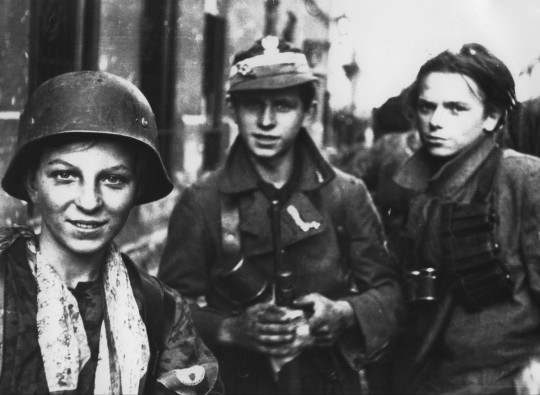
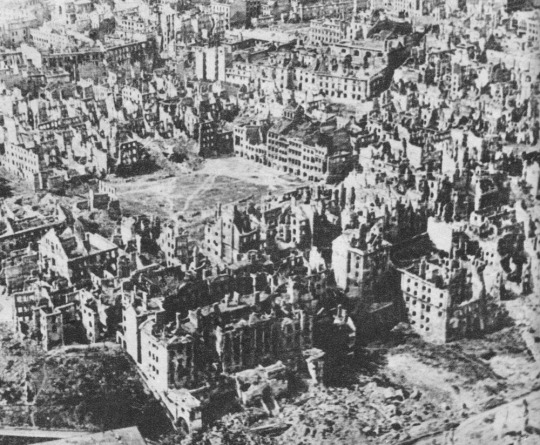
#warsaw uprising#wwii#poland#polish home army#resistance#antifascist#institute of national remembrance
10 notes
·
View notes
Text
WIERSZE Z SERII ANTYWOJENNEJ ( 6)
Zygmunt Sieradzki Wprowadzenie Dedykuję mój tomik wszystkim, którzy poznali smak cierpienia. Wszystkim tym, którzy nie poddali się losowi i uwierzyli, że wygrana jest w zasięgu ręki. Tym, którzy zostali zmuszeni stworzyć sztuczny, iluzoryczny świat, bo ból był za silny do zniesienia. Świat jest trudny i czasami okrutny, ale przegrana życiowa nie musi oznaczać końca świata. Nie jestem…
0 notes
Photo
[ID: a youtube comment by Paweł Sieradzki that reads: this is the music. peiod /end ID]

7K notes
·
View notes
Text
Ponownie: są wstępne wyniki, potencjalnie są zmiany, ale to niesamowite, jak bardzo podzielone są niektóre okręgi, jeśli chodzi o preferowane partie i wyniki kolejnych miejsc (np. porównując okrąg sieradzki z prawdopodobnie warszawskim albo Polskę na zachód od Wisły z tą po drugiej stronie brzegu).
A do tego z wypowiedzi niektórych stron czy polityków wychodzą przepiękne screeny:
- "Czy uważa pan, że wpływ na wynik partii miał komentarz o jedzeniu psów?" (No, prawdopodobnie niestety tak)
[w jakim świecie ten dialog miał potencjał na istnienie w kampanii wyborczej??? A co z pedofilią?! Ona im pewnie nie zabrała głosów?!]
- "Niemcy się cieszą, bo Tusk może wróci do rządu, co poprawi relacje polsko-niemieckie"
[jako ekspert od czego? Jaka jest jego area of expertise poza byciem politykiem? Przecież on już był jedną nogą na emeryturze, co i tak nie przeszkadzało mu w nagrywaniu rasistowskich filmików]
- "..."
(znacząca cisza po stronie partii dotychczas rządzącej, ale może po prostu za mało przescrollowałam)
#a poza tym wstępne wyniki wyglądają jak leczenie szarańczy cholerą. nadzieja w tym#że partie znajdą kompromisy które będą działały#z oceną głosowania zaczekam cztery lata (bo radość z 'nie oni' nie jest gwarancją sukcesu)#dobrych rządów też nie
0 notes
Photo
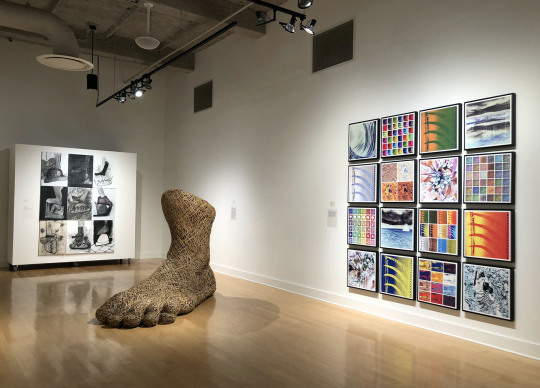
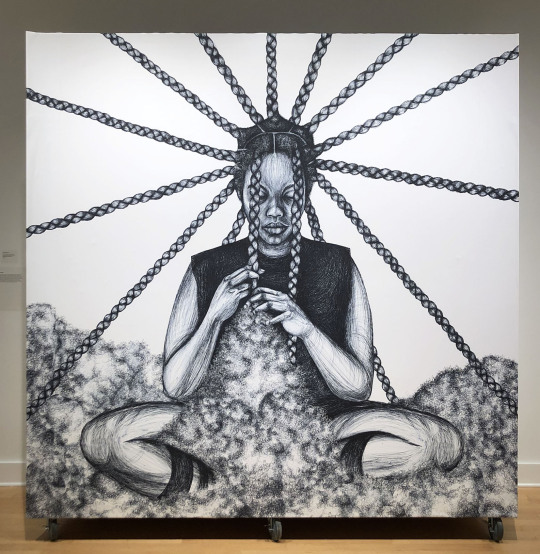
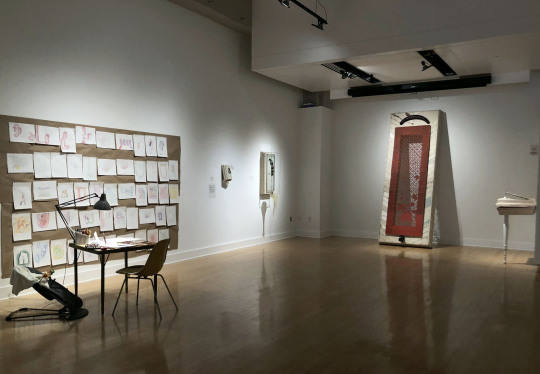
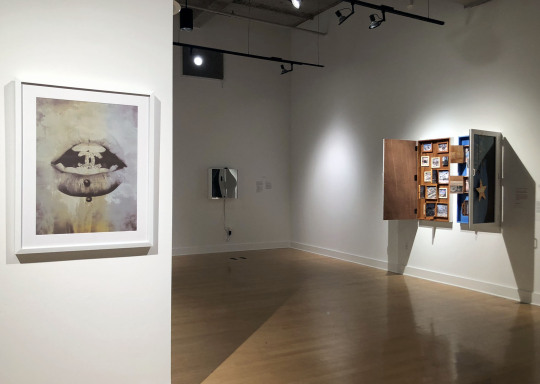
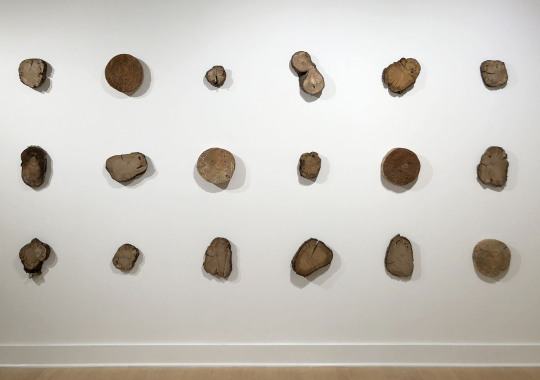

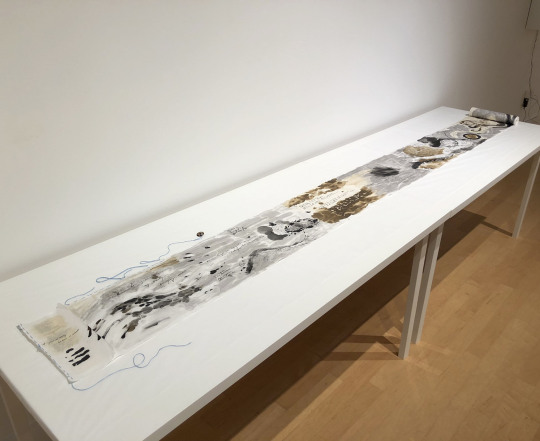

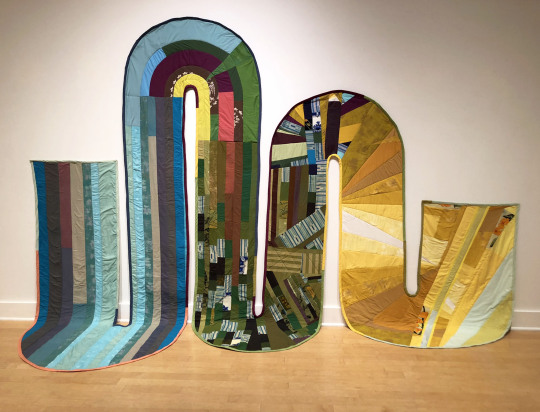
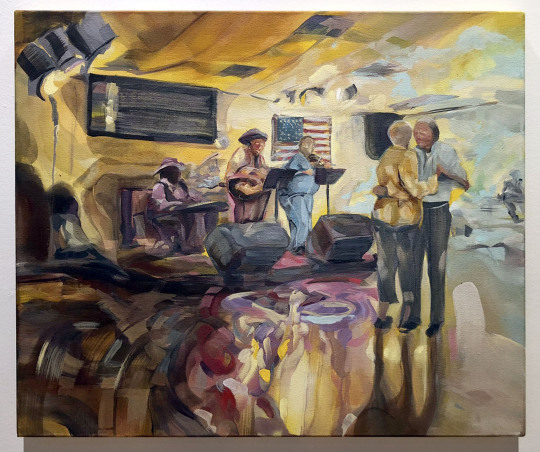
This is the last week to check out the Art+Design Faculty Exhibition at University of Tampa’s art gallery, Scarfone Hartley. It’s a wonderful chance to check out the talent that is teaching at the school as well as some impressive work.
Artists included: Jaime Aelavanthara, Peter Cotroneo, Molly Evans, Kendra Frorup, Corey George, Jennifer Guest, Joshua Haddad, Ry McCullough, Samantha Modder, Alexander Nixon, Eric Ondina, Angelina Parrino, Emma Quintana, Joseph Scarce, and Chris Valle.
Below are more selections from the exhibition-

AI, artist Emma Quintana, and artist/ developer Rick Hanberry- Sapience, Artificial intelligence that is constantly adapting and learning, mirror, webcam, electronics
"The mirror interface of Sapience is a real-time Al facial and emotional translator that uses inferred data from a participant's face to construct a prompt for OpenAI's GPT-3 text synthesis AI. GPT-3 then displays remarks on the reflection of the participant that have been synthesized and the machine attempts to understand and respond to the emotions and personal details of the participant. Sapience points to the inherent ethical issues that the use and integration of AI pose within the already varied spheres it has been integrated into. The accuracy and reliability of such systems can vary significantly and it is important to be aware of the limitations and potential biases of any technology used for these purposes. It is also important to consider the ethical and privacy implications of using such systems, and to ensure that they are used responsibly and transparently.”

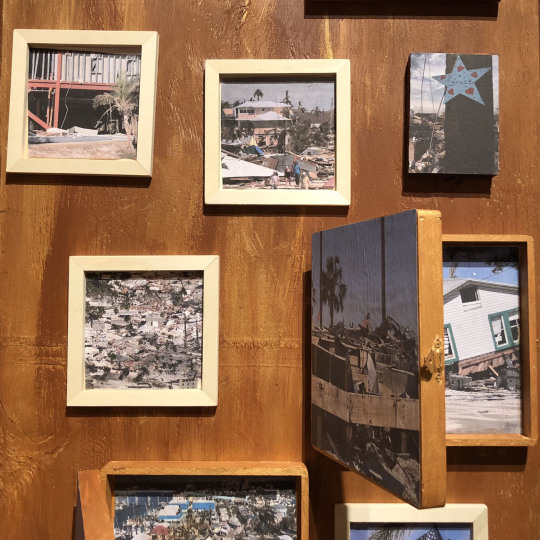
Joseph Scarce- Hinge on Disaster, Water mixable oil paint, mixed media, photos, and wooden stars on wood panel
"Scarce’s artwork reflects his connection to the community through disaster art therapy response. He brings attention to the struggles and challenges related to recovering from a disaster and the effect on the impacted natural surroundings. This artwork entices us, the viewer, to acknowledge how we can make a difference in sending hope to those devastated by disaster. The Hinge on Disaster encourages the viewer to open the window to view the devastation and the healing after Hurricane Ian."
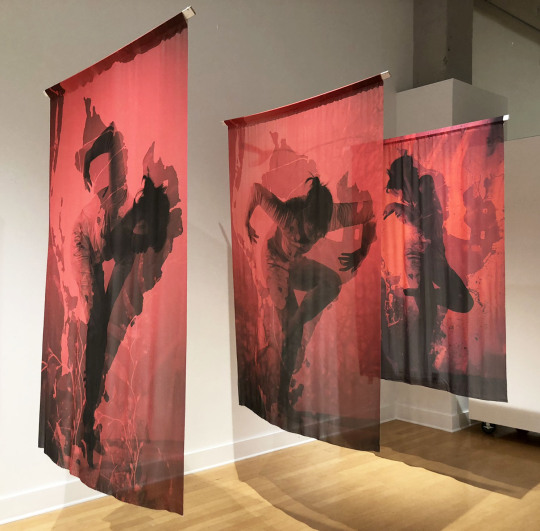
Jaime Aelavanthara and Amanda Sieradzki- Redbloom, Photographs printed on crepe georgette
"Jaime Aelavanthara and Amanda Sieradzki's multidisciplinary project Redbloom examines the fragile ecosystem of Florida's shoreline. Printed on sheer fabric, the photographs feature choreography by UT Dance professor, Amanda Sieradzki drawn from research on the red tide's effects on animal life. The human form moves through space, alongside Marine plant elements, such as sea grass and kelp, to suggest both the natural beauty of the Gulf Coast, as well as its susceptibility to toxic algae blooms and red tide. Redbloom ultimately explores how choreography and photography merge, emphasizing the human connection to these pressing water issues in the Tampa Bay region and beyond."
This exhibition closes 2/24/23.
#scarfone hartley#university of tampa#tampa art shows#art#art shows#florida art shows#ry mccullough#corey george#samantha modder#kendra frorup#emma quintana#eric ondina#jaime aelavanthara#joshua haddad#alexander nixon#angelina parrino#peter cotroneo#molly evans#joseph scarce#chris valle#installation art#sculpture#painting#photography#mixed media
0 notes
Photo

Handmade embroidery inspired by traditional polish designs from sieradzkie region
#embroidery#handmade#diy#polish folk#polish folklore#folk#folklore#slavic folk#slavic folklore#polish#slavic
75 notes
·
View notes
Text
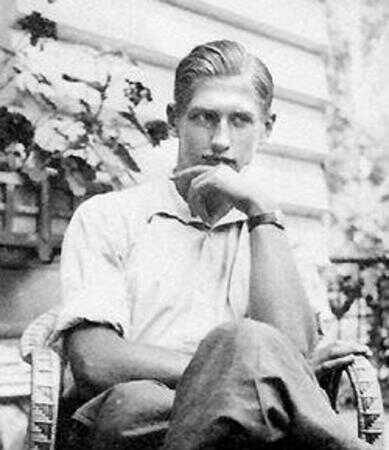
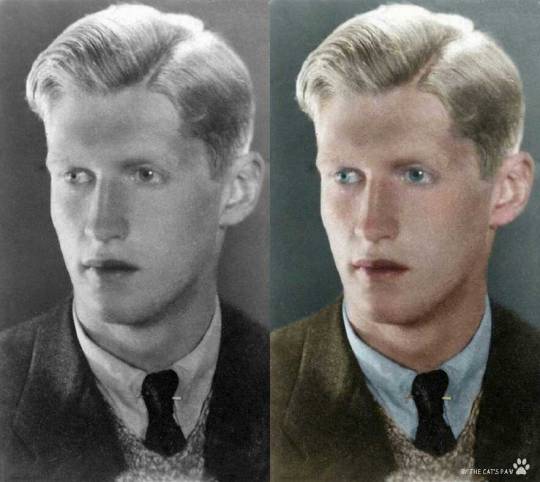
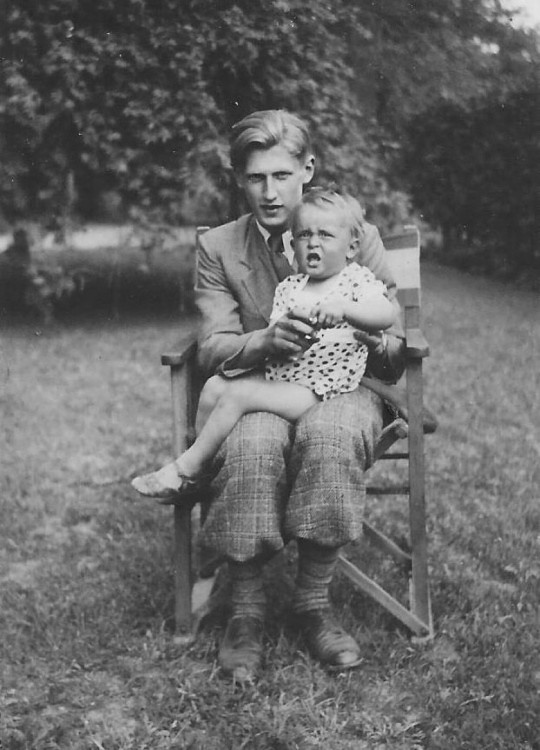

Andrzej Romocki, codename Morro (April 16, 1923 - September 15, 1944) was a Polish Scoutmaster who attained the rank of captain in the Armia Krajowa (Polish Home Army) during World War II. He was the commander of the Rudy Company and, after August 31, 1944, the whole of the Zośka Battalion.
Romocki died in the Warsaw Uprising in 1944, at the age of 21.
Tadeusz Sumiński, a soldier from "Zośka" recalls: "We are standing behind a small house against the wall facing the Vistula river. Morro comes out alone, completely uncovered and out in the open, approaching the seemingly deserted German trenches. For a moment he stops, facing the bridge. It is getting light. A single shot from a rifle can be heard. Morro falls down on the ground. - Oh my God! - Śpioch tears himself away from the wall and begins to crawl in Morro's direction. He is almost halfway from him. The second bullet hits the ground right before Śpioch's head. Suddenly, Zosia turns up. Without thinking she runs to Amorek, we are trying to stop her. She tears herself loose. She kneels down beside him. She is completely uncovered and turns Andrzej over. - I can't find the wound!...(...) She is still searching for the wound, without success. In any case, it is unnecessary: Morro is dead."
Stanisław Sieradzki ''My meetings with Morro'': "(...) Early, on June 28, 1940 Andrzej's father, who was his great friend, was killed by a German car. Andrzej was left with his mother and a younger brother Janek. Andrzej was very even-tempered. I rarely could see him smiling. He was always contemplative. I particularly remember a day when I was wounded nearby the Polonia stadium, on August 22. I was brought to an insurgent hospital in the Mlawska street. Andrzej visited me there. He did it like a good protector, like my commander. I will not forget his sad face till the end of my life. During fights in the Old Town Andrzej experienced his personal tragedy - the death of his younger brother Janek "Bonawentura". He was fighting further on, commanding as bravely as never before.''
#Romocki family#andrzej romocki#morro#warsaw uprising#powstanie warszawskie#poland#Andrzej morro romocki#wwii#*#history#europe#scouting#scouts#polish history
49 notes
·
View notes
Link
The note jammed onto a windshield in Sweden in March last year was designed to terrify. WE ARE WATCHING YOU, YOU JEWISH SWINE, read the message to a retired professor, written on paper with the logo of the Nordic Resistance Movement, a Swedish neo-Nazi organization.
In the bucolic university town of Lund, with its cobblestone streets and medieval buildings, the threat seemed jarringly out of place. More notes followed. “I was really scared,” says the professor, a small woman of 70, who is too fearful about a further attack to reveal her name in print.
Finally in October, an attacker broke into the professor’s home before dawn and set it alight. By a stroke of luck, the professor was not there. But her living and dining rooms were reduced to ash. So too were the writings of her late mother, detailing her internment in the Nazi concentration camp of Auschwitz. “For the first time in my life I have needed therapy,” she says, over tea in a sunlit café in Lund. “I have not known what to do with my life.”
The professor was targeted because she is Jewish, and in that she is not alone. Anti-Semitism is flourishing worldwide. Attacks on Jews doubled in the U.S. from 2017 to 2018, according to the Anti-Defamation League (ADL) in New York City. That included the shooting in Pittsburgh’s Tree of Life synagogue last October, which killed 11 worshippers.
But the trend is especially pronounced in Europe, the continent where 75 years ago hatred of Jews led to their attempted extermination. The numbers speak plainly in country after country. For each of the past three years, the U.K. has reported the highest number of anti-Semitic incidents ever recorded. In France, with the world’s third biggest Jewish population, government records showed a 74% spike in anti-Semitic acts between 2017 and 2018. And in Germany, anti-Semitic incidents rose more than 19% last year. The findings prompted Germany’s first anti-Semitism commissioner to caution Jews in May about the dangers of wearing kippahs, the traditional skullcaps, in public.
Unsurprisingly, many Jews in Europe feel under assault. In an E.U. poll of European Jews across the Continent, published in January, a full 89% of those surveyed said anti-Semitism had significantly increased over five years. After polling 16,395 Jews in 12 E.U. countries, in a separate survey, the E.U.’s Fundamental Rights Agency concluded that Europe’s Jews were subjected to “a sustained stream of abuse.” With the decade drawing to a close, 38% of those surveyed said they were thinking about emigrating “because they no longer feel safe as Jews,” says the E.U. report.
European officials were stunned at the findings, but perhaps they ought not to have been. A complex web of factors have combined to create this moment in time for one of Europe’s oldest communities. Anti-Semitism has found oxygen among white supremacists on the far right and Israel bashers on the far left. Millions of new immigrants are settling in Europe, many from Muslim countries deeply hostile to Israel and sometimes also Jews. Exacerbated by the Internet’s ability to spread hatred, anti-Jewish feeling is surging in way that experts fear could result in a conflagration, if governments and communities fail effectively to tackle its causes.
...Not waiting for their leaders, communities across Europe have begun to take action themselves. Raised learning about Nazism, many fear what might happen if anti-Semitism is left unchallenged. In recent years, teachers, imams, rabbis and local activists have launched countless initiatives to break stereotypes, educate youth and forge links across religions. In several interviews with TIME, those fighting anti-Semitism caution that it is likely to take many years for their efforts to succeed. Still, they have begun. In Paris, Delphine Horvilleur, a rabbi and author of a recent book on anti-Semitism, says a young Muslim worshipper approached her in her synagogue after she presided over a joint Muslim-Jewish prayer service.
“He told me, ‘I grew up in a family where anti-Semitism was the music in the background,’” she says. Now, she says, “We have to ask ourselves, How can we make sure they have the ability to lower the volume?”
The horrors of World War II shamed the world into acknowledging the evils of anti-Semitism. But exposure did not cure it. Instead, say experts, the hatred simmered for years. “There was a consensus that anti-Semitism should not be voiced openly after World War II,” says Günther Jikeli, a specialist in European anti-Semitism at Indiana University, who is German. “This has gone away with time.”
The growth of the Internet provided new platforms for conspiracy theorists to circulate racist fantasies more broadly. After the financial crisis of 2008, for example, the ADL warned that anti-Semites were spreading lies on message boards that Jews were somehow to blame for the crash. One rumor went that Lehman Brothers, the vaunted U.S. investment bank founded by Jewish immigrants from Europe, had transferred $400 billion to Israeli banks prior to its collapse.
A decade on, those who monitor anti-Semitism believe each attack or conspiracy theory posted online, no matter how small, sets off others. As social media has become an ever greater and yet more unregulated part of our lives, hatred has proliferated. “It used to be that anti-Semitism peaked during times of conflict in the Middle East,” says Katharina von Schnurbein, the European Commission’s first-ever coordinator for combatting anti-Semitism. “Now the incidents remain at their highest level ever recorded.”
...Tensions sporadically erupt in violence. In Sarcelles, a French commune where Jews and Arab immigrants have lived alongside each other for decades, violence erupted during a pro-Palestinian march in 2014. Jewish businesses came under attack by demonstrators, many of them Muslim. Five years on, the Jewish residents of Sarcelles live with armed French soldiers on permanent patrol on their streets, in a measure of the government’s concern about further race riots. “We live with a sense of anxiety,” says René Taïeb, a Jewish community leader, sitting in a kosher café in Sarcelles. “We have a bag packed, ready to go, in the closet.”
But Europe’s most hardcore anti-Semites are arguably on the far right, and they are slowly joining the mainstream, as Europe’s political loyalties have fractured and polarized. In Hungary, the far-right Prime Minister Viktor Orban’s campaign against Hungarian-American billionaire George Soros is regarded as thinly veiled anti-Semitism. And here in Sweden, ostensibly the most liberal country in Europe, a group of far-right extremists has achieved something close to political legitimacy.
...On the opposite end of the political spectrum, anti-Semitism has also flared up. During months of the so-called Yellow Vest protests in France, a handful of demonstrators in the crowd resurrected the stereotype of Jews controlling the levers of power. In February, a group of protesters accosted renowned French philosopher Alain Finkielkraut on a Paris street, screaming, “You are going to hell!” and “Go back to Tel Aviv!”
The problem is not always so overt, however. In the U.K., the opposition Labour Party leader Jeremy Corbyn has faced fury among some members over his alleged tolerance for anti-Semitism, especially regarding criticism of the Israeli government. The veteran leftist has said the party’s problem stems from a “small number of members and supporters,” and has pledged to stamp it out. But his defense has rung hollow to some. “The party is institutionally anti-Semitic,” says Luciana Berger, a Jewish member of Parliament who quit Labour this year over the issue. Under Corbyn, she tells TIME, “there is more of a permission for it to happen now.”
...Many Jews in Europe say it is not the major incidents but the minor ones that prove how widespread this problem is. They describe anti-Semitism as having seeped into quotidian life, in some ways complicating the effort to tackle the problem. “Unless it is very serious and you are physically attacked, there is a tendency not to call the police,” says Fredrik Sieradzki, spokesman for the Jewish community in Malmo, on Sweden’s southern border with Denmark.
...The more insidious effect is not at all visible: the choice by many Jews to remain discreet about their religious background. In numerous interviews, European Jews tell TIME that they avoid wearing a Star of David, and if they do, they tuck it under their shirts. Many also forgo affixing the traditional miniature prayer scrolls, called mezuzahs, to their doorposts, as many American Jews do, choosing instead to hang them inside. “Parents say to their kids, ‘Don’t tell your friends you are Jewish.’ Jewish teachers are afraid to tell kids they are Jewish,” says Shneur Kesselman, the Chabad-Lubavitch rabbi of Malmo, who moved from his native Detroit in 2004.
Kesselman recently installed bulletproof glass on his office window in Malmo’s synagogue, which dates from 1903. He says Jews have steadily adapted to low-level hostility. “We feel so long as our names are not on a list, we are O.K.,” he says. “There is a danger that we are accepting much too much.”
...Taïeb, the community leader in Sarcelles, says the best form of resistance might be to remind anti-Semites who Jews really are — their neighbors, and fellow citizens. He recalls watching the protest in 2014 spiral into violence and deciding to gather about 100 men to surround the synagogue. Instead of chanting Jewish prayers, as one might have expected, they decided instead to sing “La Marseillaise,” France’s national anthem. “We wanted to make the point that we are French, really French, who happen to be Jewish.”
...Yet, after a long period of feeling paralyzed by fear, the professor says she is finally venturing out. “Every day, I wake up and tell myself to go out and repair myself,” she says. Her home, rebuilt, now has security glass and alarms, far different from before the attack. “My house was wonderful, totally open, with big magnolia trees in the garden. The magnolia trees survived.”
[Read Vivienne Walt’s full piece in Time.]
252 notes
·
View notes
Photo

Franciszek Łubieński, Strój sieradzki, ca.1912
#Łubieński#franciszek łubieński#lubienski#polish artist#polish painter#art history#eastern eauropean art#eastern europe#poland#slavs#slavic#20th century art#folklore#sieradz
512 notes
·
View notes
Text
WIERSZE Z SERII ANTYWOJENNEJ ( 5)
Zygmunt Sieradzki Wprowadzenie Dedykuję mój tomik wszystkim, którzy poznali smak cierpienia. Wszystkim tym, którzy nie poddali się losowi i uwierzyli, że wygrana jest w zasięgu ręki. Tym, którzy zostali zmuszeni stworzyć sztuczny, iluzoryczny świat, bo ból był za silny do zniesienia. Świat jest trudny i czasami okrutny, ale przegrana życiowa nie musi oznaczać końca świata. Nie jestem…
0 notes
Photo

From Kennecott Mines: An Alaskan Ghost Town, one of 16 photos. A view of the abandoned buildings of Kennecott Mines, inside Alaska's Wrangell-St. Elias National Park and Preserve. The larger stair-step structure was the Concentration Mill, where copper ore was first crushed and separated. (Sieradzki / Shutterstock)
13 notes
·
View notes
Photo

#male model#sieradzky#sunset#sunrise#sunday#fashion#voguemagazine#harper's bazaar#kmagazine#streetstyle#streetwear#sonyalpha#sony#my art#artists on tumblr#artist#my edit#lovemyjob#loveyourself#portfolio#poland#photography#photooftheday#wednesday#picoftheday#backpack
0 notes
Text

Sieradzkie przedwiośnie
Żeglina, marzec 2019
2 notes
·
View notes
Photo

Decoupling stress and corrosion to predict metal failure
An Arizona State University research team has released new insights about intergranular stress-corrosion cracking (SCC), an environmental cause of premature failure in engineered structures, including bridges, aircraft and nuclear power generating plants.
The research, Decoupling the role of stress and corrosion in the intergranular cracking of noble alloys, released today in Nature Materials, addresses the assumption that intergranular SCC is the result of the simultaneous presence of a tensile stress and corrosion, and demonstrates that the roles of stress and corrosion can be decoupled, or can act independently.
"The finding is the culmination of about 30 years' work on this kind of stress corrosion problem," said lead researcher Karl Sieradzki, a professor of materials science and engineering at ASU. "We now have a view into how new alloys can be designed to avoid this form of stress corrosion-induced failure."
When metals are exposed to water containing salts, the strength of the metal can be severely compromised and lead to unexpected failure. An example of a SCC failure is the 2003 Kinder Morgan gasoline pipeline in Tucson, AZ.
Read more.
#Materials Science#Science#Materials Failure#Corrosion#Stress corrosion cracking#Intergranular fracture#Stress and Strain#Arizona State University
23 notes
·
View notes